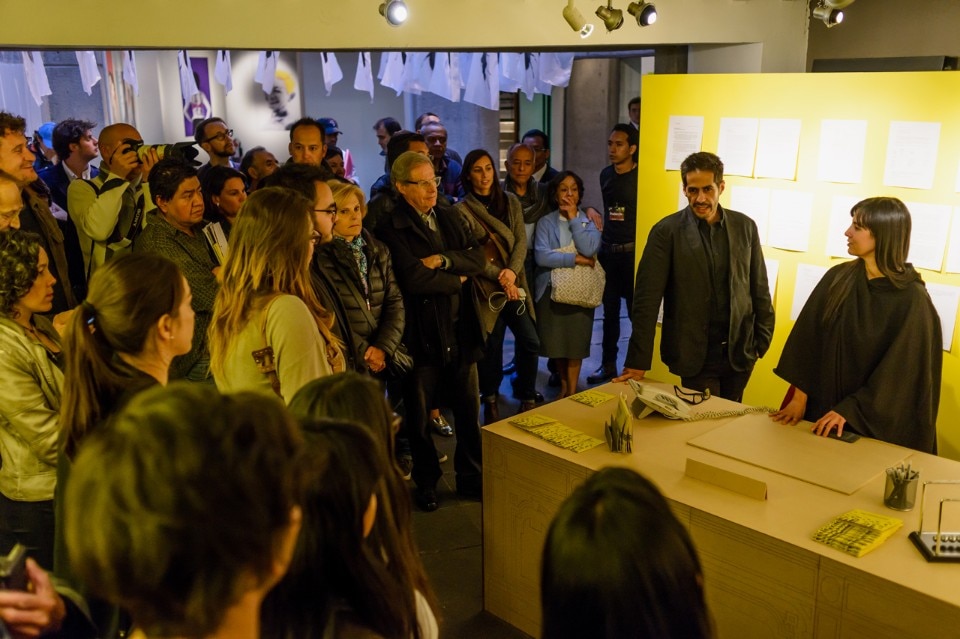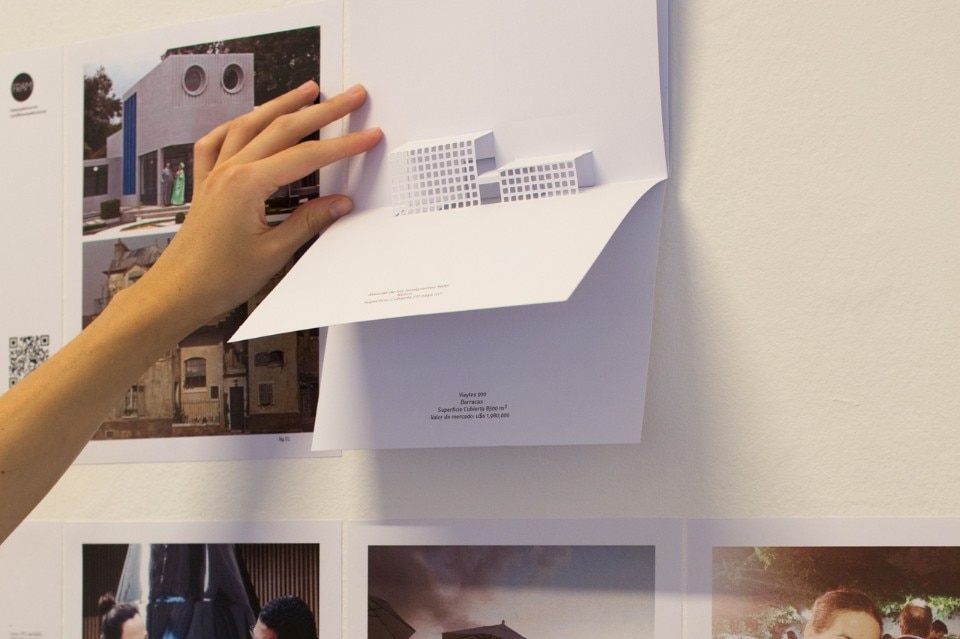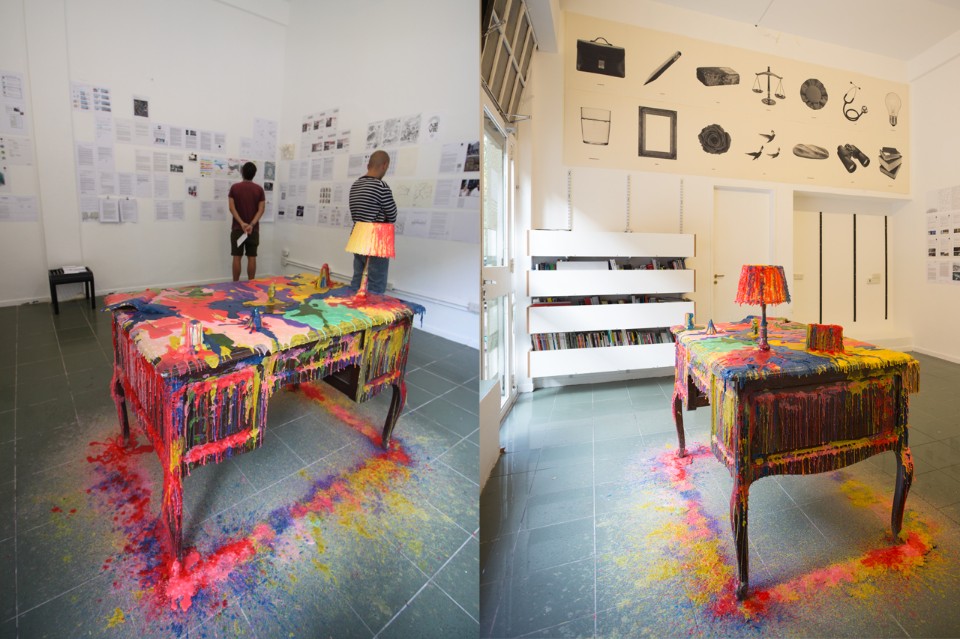
In the spirit of Alberti’s treatise, the contemporary letters are implicitly addressed to other architects as much as to governing authorities. Whether the mayors will actually read or heed any of the letters is an open question. But Letters to the Mayor uses installation design to allude to the dynamics of power, patronage, and creative process. Each gallery where the letters are exhibited includes a symbolic mayoral desk and architect’s table. For instance, in the 2015 installation in Mariupol, Ukraine, designers IZOLYATSIA contrasted a “fat cat” mayor’s desk wrapped extravagantly in faux-fur with a humble wood desk for an architect pushed back in a corner.
In Buenos Aires, Grupo Bondi (Eugenio Gómez Llambi, Iván López Prystajko) combined the architect’s and mayor’s workspace though a kind of overlay: a massive bureaucratic desk is covered with colorful pools of waxy pigment (à la Lynda Benglis’s poured latex rubber works of the 1960s), which drips down its sides and spatters onto the floor. It could be read as the residue of architects’ passionate strivings on behalf of the cities they love, sometimes resulting in nothing more than a lot of spilled ink, effort, and lifeblood. Alternately, it represents the architect’s revenge upon the bureaucrats who have blocked their best ideas from being realized: an orgy of violent color bleeds all over the desk, rendering it useless but finally beautiful, a monument to the frustrated creative process. A third element built into each iteration of Letters to the Mayor, in addition to the letters and desks, is an artistic wallpaper that reflects ideas and issues unique to each city.
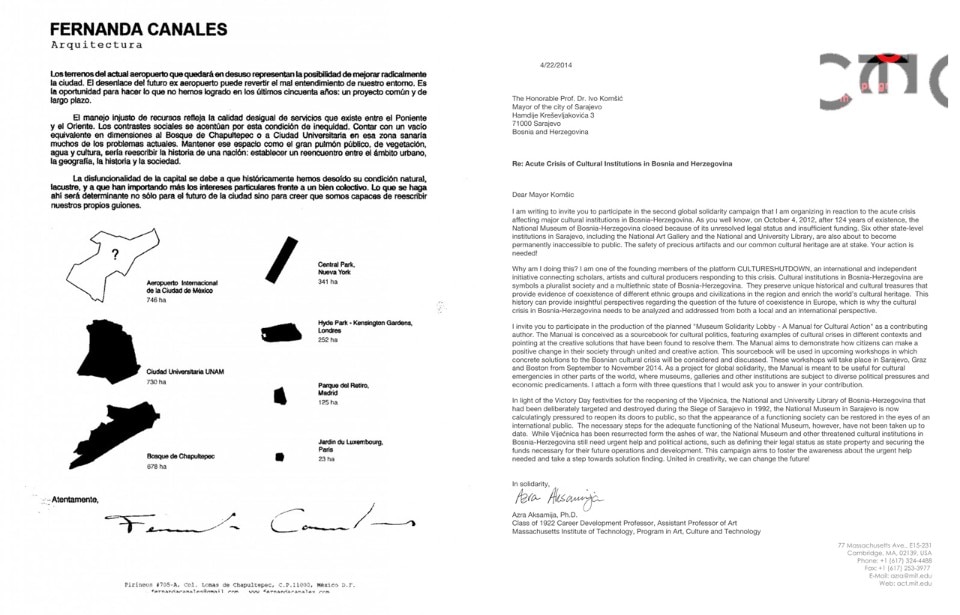
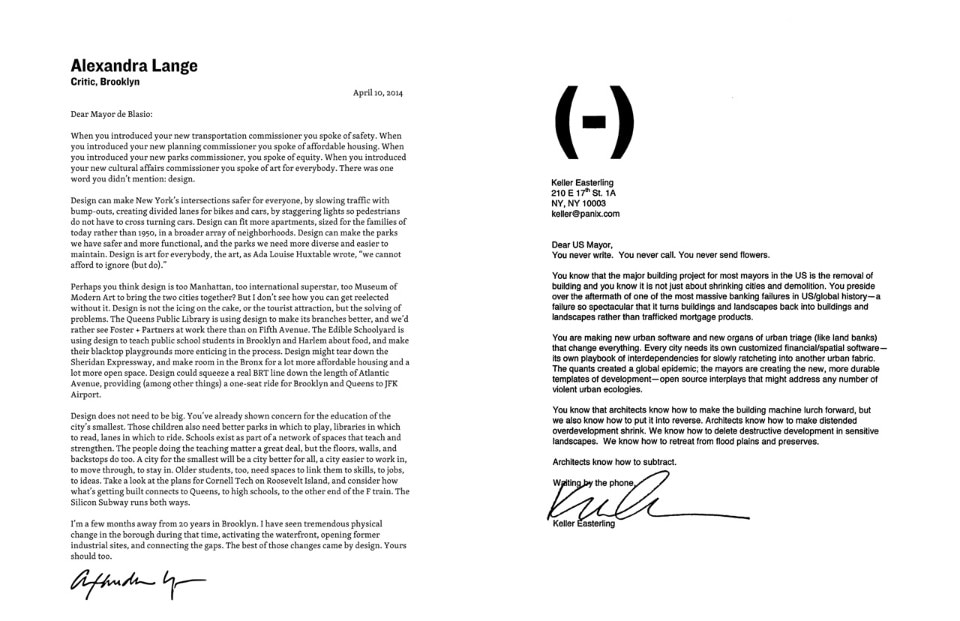
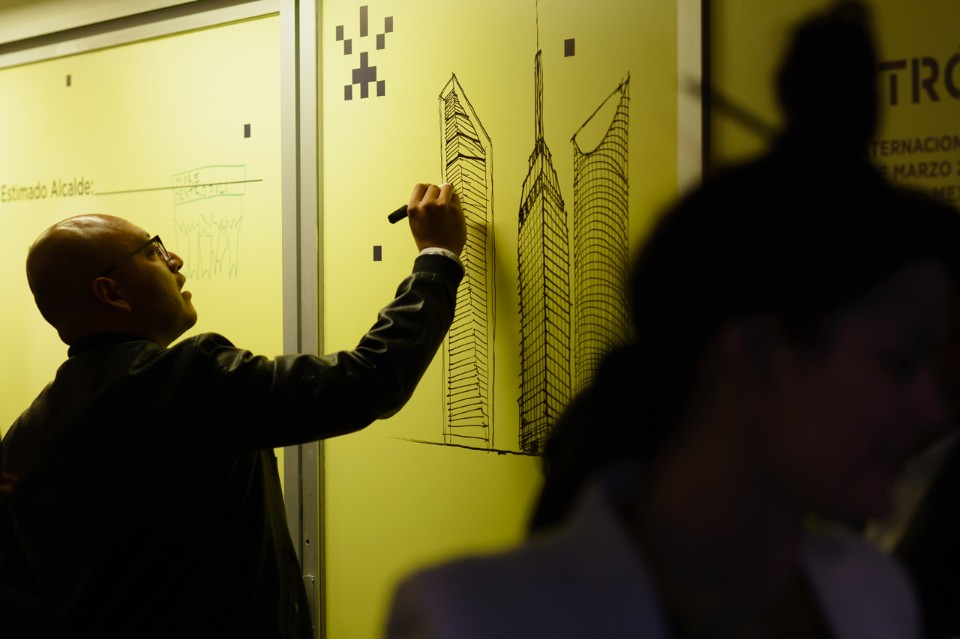
Some architects ventured to pitch specific design ideas, hoping to advance their favorite causes. In one memorable example, Yvonne Farrell and Shelley McNamara (Grafton Architects) asked the mayor of Dublin to “make one small gesture, which could have a big impact,” namely opening the forecourt of the mayoral residence to the public. “Please take away those bollards and parked cars and give this space back to the people… Make this space feel like an urban living room,” they wrote, adding, “You could have two long generous comfortable stone benches, attached to your front walls, heated by solar panels, so the benches are always warm and always dry. A movable shelter could be integrated to protect from wind and rain, even a secret and discreet toilet facility.”
Azra Aksamija (MIT) invited the mayor of Sarajevo to join her group’s campaign to save the threatened national museums, art galleries, and libraries of Bosnia-Herzegovina. Sonja Dümpelmann (Harvard University) made the case to keep the former Tempelhof Airport in Berlin a mostly free open space or “void,” rather than redeveloping it with parks or apartments. And Marisa Yiu (ESKYIU) weighed in against a proposal to limit the growing number of tourists to Hong Kong with a counterproposal to build more elevated walkways, thereby handling the extreme density.
